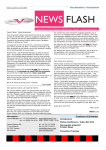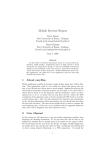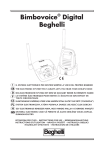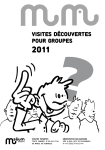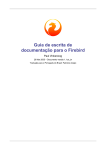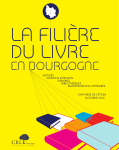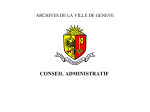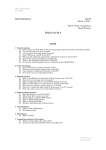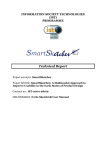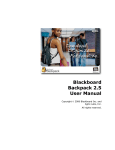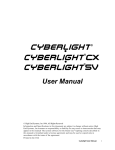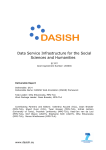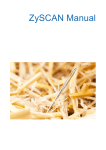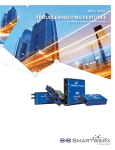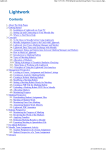Download Jot user manual - Princeton University
Transcript
Jot user manual Robert D. Kalnins [email protected] Philip L. Davidson [email protected] David M. Bourguignon [email protected] Jot user manual by Robert D. Kalnins, Philip L. Davidson, and David M. Bourguignon Copyright © 2003 by Princeton University Here is the Jot user manual abstract. Table of Contents 1. Introduction ................................................................................................................1 2. License Information ..................................................................................................3 3. Tutorials .......................................................................................................................5 Basic Tutorial..........................................................................................................5 Intermediate Tutorial ............................................................................................9 Advanced Tutorial...............................................................................................16 Animation Tutorial..............................................................................................16 4. Reference guide........................................................................................................27 Camera Manipulation.........................................................................................27 Mouse ..........................................................................................................27 Tablet ...........................................................................................................27 Editing Mode - Overview ..................................................................................27 Editing Mode - Line Editing Mode...................................................................27 Mouse ..........................................................................................................28 GUI...............................................................................................................28 Editing Mode - Hatching Editing Mode ..........................................................35 Mouse ..........................................................................................................35 GUI...............................................................................................................35 Editing Mode - Basecoat Editing Mode ...........................................................37 Mouse ..........................................................................................................37 GUI...............................................................................................................37 Global Parameters ...............................................................................................41 Lighting .......................................................................................................41 Background.................................................................................................42 Paper............................................................................................................43 Antialiasing ................................................................................................43 Keyboard Commands.........................................................................................43 Global Commands.....................................................................................44 Line Mode Commands .............................................................................45 Hatching Mode Commands.....................................................................45 Animation Commands .............................................................................45 5. Jot Setup ...................................................................................................................47 How to obtain Jot ...............................................................................................47 Requirements .......................................................................................................47 Installation............................................................................................................47 File Tree and File Formats ..................................................................................47 File Tree .......................................................................................................47 File Formats ................................................................................................49 6. Questions and Answers..........................................................................................51 iii iv Chapter 1. Introduction Jot is a program that lets designers, artists and animators to directly annotate 3D computer graphics models (and animation) for stylized (NPR) rendering. Jot currently implements many of the ideas described in the research papers WYSIWYG NPR1 and Coherent Stylized Silhouettes2, and will soon include Suggestive Contours3 as well. The long-range goals of the project are described here4. The Jot software is under development at Princeton University, in collaboration with researchers at Brown, Rutgers, and the University of Michigan. The implementation is intended as a research prototype, not commercial software, so it comes with the usual caveats: we know it has bugs, the UI is not well-designed, and so forth. Nonetheless, if you encounter obvious bugs, please send email to <[email protected]>. For other concerns, such as problems with these web pages, send mail to <[email protected]>. Our current release runs on PC/Windows only, though we anticipate a release on LINUX soon and Mac OS-X after that. We are currently releasing software executables only, but intend to make source code available in the long run. Made with DocBook5! Notes 1. http://www.cs.princeton.edu/gfx/proj/wnpr 2. http://www.cs.princeton.edu/gfx/proj/css 3. http://www.cs.princeton.edu/gfx/proj/sc 4. http://www.cs.princeton.edu/gfx/proj/3Dcontent 5. http://opensource.bureau-cornavin.com/crash-course/index.html 1 Chapter 1. Introduction 2 Chapter 2. License Information License info coming soon. 3 Chapter 2. License Information 4 Chapter 3. Tutorials We present below two tutorials of increasing complexity to describe Jot work flow. Basic Tutorial Drawing the Cactus Picture! In this tutorial, we will create a picture of a cactus. 1. Loading the cactus model in flat rendering. C:\ cd JOT_ROOT C:\ cd manual\tutorials\tutorial-1 C:\ jotq cactus-1.jot The 3D geometric model of the cactus, in flat shading. 2. Rendering the model in default NPR renderer (black silhouettes and no fill). Click with left mouse button on the model. 5 Chapter 3. Tutorials The 3D geometric model of the cactus, with default NPR rendering. 3. Editing the silhouette a. Select the silhouette by clicking on it with left mouse button. The silhouette turns red. Cactus model with selected silhouette. b. Adjust stroke width with the slider: NPR Stroke Editor−→Stroke Shape/Appearance c. Adjust stroke flare to zero: NPR Stroke Editor−→Style d. Apply change permanently: NPR Stroke Editor−→Style and press Apply Current. 4. Sketching the silhouette offset pattern. a. With the silhouette selected, sketch the silhouette offset pattern, such as the one on the lower right of the figure, using the left mouse button. Cactus model with modified silhouette and offset pattern. b. Apply offset pattern to the strokes: NPR Stroke Editor−→Stylization and press Apply Sketch. 6 Chapter 3. Tutorials Cactus model with modified silhouette with offset pattern. 5. Setting the basecoat a. Switch to basecoat editing mode. Click on Previous Mode to enter Basecoat mode. Click on the model to select it again. Cactus model selected. b. Add a normal shader: Base Coat Editor−→Base Coat−→Layer Editor. Select Norm and press Add. Adjust hue (0.3), saturation (0.5), value (0.6). 7 Chapter 3. Tutorials Cactus model with normal shader. c. Add a toon shader: Base Coat Editor−→Base Coat−→Layer Editor. Select Toon and press Add. Select alpha_thin.png texture: Base Coat Editor−→Base Coat−→Texture and adjust alpha (0.5): Base Coat Editor−→Base Coat−→Alpha. Cactus model with toon shader. d. Adjust lighting: Base Coat Editor−→Base Coat−→Toon Lighting. Select custom light L? and adjust lighting direction with Dir/Pos. 8 Chapter 3. Tutorials Cactus model with lighting. 6. Done! Cactus model completed. Intermediate Tutorial Drawing the Mechanical Part Picture! In this tutorial, we will create a picture of a mechanical part. 1. Loading the model in flat rendering. C:\ cd JOT_ROOT C:\ cd manual\tutorials\tutorial-2 C:\ jotq mechanical-1.jot 9 Chapter 3. Tutorials The 3D geometric model of the mechanical part, in flat shading. 2. Setting the background a. while in the the WYSIWYG NPR window, press v for bringing up Global Parameters b. Adjust color: Global Parameters−→Background. Adjust hue (0.65), saturation (0.12), value (0.9), alpha (0.9). Check box Apply Paper to Bkg. c. Adjust paper: Global Parameters−→Paper. Check box Active. Select p-cement-6.png in paper in Texture. Adjust brightness (0.6), contrast (0.3). Mechanical part model with background. Type v again to hide the Global Parameters window. 3. Setting the basecoat a. Switch to basecoat editing mode. Click on Previous Mode to enter Basecoat mode. Click on the model to select it again. 10 Chapter 3. Tutorials Mechanical part model selected. b. Add a toon shader: Base Coat Editor−→Base Coat−→Layer Editor. Select Toon and press Add. Select alpha_thin.png texture: Base Coat Editor−→Base Coat−→Texture and adjust alpha (0.5): Base Coat Editor−→Base Coat−→Alpha. Select Apply Paper Effect. Mechanical part model with toon shader. c. Adjust lighting: Base Coat Editor−→Base Coat−→Toon Lighting. Select custom light L? and adjust lighting direction with Dir/Pos. 11 Chapter 3. Tutorials Mechanical part model with lighting. 4. Stylizing visible lines a. Switch to line editing mode. Click on Next Mode to enter Line mode. Click on a visible crease line (CRE_VIS) to select it. Mechanical part model with line selected. b. Select a preset line style: NPR Stroke Editor−→Presets. Select preset mech-solid. Editor−→Stroke Apply change permanently: NPR Stroke Editor−→Line Plug-in Controls−→Stylization−→Style. Select Apply Current. 12 Chapter 3. Tutorials Mechanical part model with new crease line style. c. Apply the same active style to silhouette lines: Select a silhouette line (SIL_VIS). Apply change permanently: NPR Stroke Editor−→Line Plug-in Controls−→Stylization−→Style. Select Apply Current. Mechanical part model with new silhouette line style. 5. Stylizing hidden lines a. Enable hidden lines: NPR Stroke Editor−→Line Plug-in Controls−→Line Types. Select See Thru, Sil-Hid and Cre-Hid. 13 Chapter 3. Tutorials Mechanical part model with hidden lines in default style. b. Apply style to hidden crease lines: Select a hidden crease line (CRE_HID). Mechanical part model with selected hidden crease line. Select a preset line style: NPR Stroke Editor−→Presets. Select preset mech-light. Editor−→Stroke Adjust period of 2D texture: NPR Stroke Editor−→Stroke Editor−→Stroke Color/Texture. Adjust Period to 20 pixels (use arrow keys for fine adjustment). Apply change permanently: NPR Stroke Editor−→Line Plug-in Controls−→Stylization−→Style. Select Apply Current. 14 Chapter 3. Tutorials Mechanical part model with hidden crease line style. c. Apply style to hidden silhouette lines: Manipulate the camera to reveal a hidden silhouette line (SIL_HID). (Learn about camera manipulation). Select it. Mechanical part model with selected hidden silhouette line. Apply the same active style to hidden silhouette lines: Apply change permanently: NPR Stroke Editor−→Line Plug-in Controls−→Stylization−→Style. Select Apply Current. 15 Chapter 3. Tutorials Mechanical part model with new hidden silhouette line style. 6. Done! Mechanical part model completed. Advanced Tutorial This tutorial will include Hatching Editing Mode. Animation Tutorial Dances with Cactii In this tutorial, we will export from Lightwave an animated scene and then import the result to Jot. 1. Load the lightwave scene in Ligthwave. C:\ cd JOT_ROOT C:\ cd manual\tutorials\tutorial-4\lw_files C:\ lightwav.exe cactus_dancing.lws 2. Manually indicate to Lightwave the location of object manual\tutorials\tutorial-4\lw_files\cactus_dancing.lwo. 16 file: Chapter 3. Tutorials Cactus model loaded in Lightwave. 3. If this is the first time you are exporting from Lightwave to Jot, load the Jot Export plugin a. In the Layout menu, select Plug-ins > Add Plug-in b. Navigate to the file "Jot Export.p", located in scripts\lw2jot.p. Click "Ok". c. Click "Ok" in the Information dialog. 4. Start the Jot Export plug-in, from the Layout > Plugins > Generic menu. Lightwave GUI. 5. The left-hand list ("All Objects") shows a list of objects in the scene, and, if the object is textured, the number of textures on that object. a. To export geometry but not texture information: i. Select the object you wish to export from the "All Objects" list. Click Export. This will move the object you have selected from 17 Chapter 3. Tutorials the "All Objects" list to the "Export List", and will disregard any textures belonging to that object. Lightwave GUI. 18 Chapter 3. Tutorials Lightwave GUI. ii. Alternately, to export all objects (without texture information), click Export All. This will move all objects in the "All Objects" list to the "Export List", and will disregard any textures belonging to these objects. Objects already exported with textures will remain unchanged. 19 Chapter 3. Tutorials Lightwave GUI. b. To export geometry with texture information: i. 20 Select the object you wish to export from the "All Objects" list (it must be an object with at least one texture). Click the Export with Texture button. Chapter 3. Tutorials Lightwave GUI. ii. If the object has more than one texture, you must choose one to be exported with the object from the dialog box that appears. Lightwave GUI. The object now appears in the "Export List", with "+ tex" after it to indicate that this object is being exported with texture coordinates. 6. Enter the starting frame in the First Frame field, and the final frame in the Last Frame field. The scene will be exported including both the first and last frames. 21 Chapter 3. Tutorials Lightwave GUI. 7. Enter a filename to save the exported scene as. The extension of the file will be changed to ".jot" regardless of what extension is entered here. Additionally, potentially many other files will be created during the export, so you may want to create a directory to save the exported files in. 22 Chapter 3. Tutorials Lightwave GUI. 8. Click "Ok". The frame slider will move from the first frame to the last frame you entered, and you will see your scene animated as it is exporting. A dialog box will alert you to the end of the export process. 9. Now import the exported files in directory manual\tutorials\tutorial4\jot_files into Jot. (A copy of the files which should have exported into the directory manual\tutorials\tutorial-4\jot_files is provided in manual\tutorials\tutorial-4\jot_files.bak.) C:\ cd JOT_ROOT C:\ cd manual\tutorials\tutorial-4\jot_files C:\ jotq cactus_export.jot Cactus model with default style. 23 Chapter 3. Tutorials 10. The various components of the cactus can be stylized using the techniques demonstrated in the previous tutorials. You may stylized this cactus and save the result by pressing s. However, manual\tutorials\tutorial-4\jot_files.npr contains another copy of the exported files which already have been stylized. C:\ cd JOT_ROOT C:\ cd manual\tutorials\tutorial-4\jot_files.npr C:\ jotq cactus_export.jot Cactus model with npr style. 11. To access the other frames of the animation, engage Animator Mode by pressing X. (WYSIWYG NPR rendering window must have focus to receive keystroke commands.) Cactus model with Animator Mode ON. 12. Step through the frames using the numeric keypad: 4 and 6 step backward and forward by one frame; 2 and 8 step backward and forward by ten frames; 5 returns to the first frame. 24 Chapter 3. Tutorials Stepping through the frames of the cactus animation. 13. To play back the entire animation, press /. Press + to stop. (Each frame is loaded from disk, so playback is slooow. Don’t ask...) Playing the cactus animation. 14. To render frames to disk, engage time sync with - and render mode with *. Engaging render to disk mode. 15. Pressing / now with render to disk mode on will play back the frames and render them to disk. (A DivX movie file of these frames is provided: manual\tutorials\tutorial-4\jot_files.npr\cactus_export.avi). 25 Chapter 3. Tutorials Frames are rippen to disk. 26 Chapter 4. Reference guide Camera Manipulation Mouse Left button: Model Interaction The left button is used for selection and stylization of the scene. This specific behavior depends upon the current mode. In general, click once on an object to select it Object attributes can now be edited. In general, hold the button down and move to draw The lines you draw affect stylization. Right button: Navigation In all modes, the right mouse button is used for camera manipulation. Click in the center of the window and drag with horizontal motion Translation parallel to image plane. Click in the center of the window and drag with vertical motion Translation perpendicular to image plane ("zooming"). Click near the border of the window and drag Rotation. Click anywhere and release, then drag Define a center of rotation (blue sphere) and use it. Double click on the model Define a point on the model surface and position it at the center of the window. Tablet TODO. Editing Mode - Overview At any given time, Jot is in one of three Editing Modes. The current is indicated in the upper left of the rendering window. In each different mode the left mouse button, some key strokes, and the GUI window behave differently. We describe in the following sections the three Editing Modes. The first concerns line editing (e.g. silhouettes and creases), the second hatching editing, the third basecoat editing (i.e. shaders for the triangle meshes). 27 Chapter 4. Reference guide Editing Mode - Line Editing Mode In this mode, various lines types arising from the geometry (e.g. silhouettes, creases) or sketched unto mesh surfaces by the user (e.g. decals) can be selected and stylized. Stylization controls described in this section include appearance parameters (e.g. width, color), path parameters (e.g. directly oversketched wiggles), and temporal parameters (e.g. frame-to-frame coherence behavior and stroke animation). Mouse In general, the left mouse button is used to select line entities (e.g. decals, silhouettes) to be stylized, and then sketch their associated stylization. If a mesh, or existing decal is left-clicked, then decal editing mode is entered as indicated at the top of the rendering window and in the status field of the GUI. The selected mesh will be indicated by showing a bounding box, and any selected decal will be highlighted. Sketching in decal mode serves to define additional decals. If any other line type (i.e. silhouette, crease, border) is selected, then line editing mode is entered as indicated at the top of the rendering window and in the status field of the GUI. The selected mesh will be indicated by showing a bounding box, and selected line will be highlighted. Sketching in line mode serves to define offset-based stylization for the selected line type. Clicking on the background or another entity will deselect the current entity. If stroke style changes in the GUI, or sketched offsets are not yet "applied" they will be lost upon deselection. GUI In this mode the GUI is used to edit the stylization and behavior of the currently selected line type. Controls common to this mode and hatching mode are described first, followed by the controls specific to line editing mode. Common Stroke Controls These controls comprise the parameters which govern stroke rendering. Presets Management Strokes parameter sets can be grouped together into named presets and saved to disk. Presets Management. Presets List box for selecting amongst the available presets. Save If "-=NEW=-" preset is selected, a new preset will be created from the current settings. If an existing preset is selected, it will be overwritten with the current settings. 28 Chapter 4. Reference guide Debug Don’t ask... Preview Displays the current active settings. Up to five example strokes can be sketched in this box. Color and Texture Settings Parameters which govern the rendering of the stroke triangle strip. Color and Texture Settings. Hue, Saturation, Value Set the stroke color. Alpha Set the stroke alpha. This is analogous to pressure wrt paper effect simulation shader. Texture Select an alpha texture. The texture can be applied as a 1D or 2D texture. If 1D then the Y direction is mapped across the width of the stroke. If 2D then the X direction is mapped along the length of the stroke. Period If ZERO then texture considered 1D. If NON_ZERO then the texture is considered 2D with period equal to NON_ZERO pixel length. Phase Phase offset (as a fraction of period length) applied to stroke parameterization (i.e. longitude in texture coordinates or sketched offset parameterization). Paper Paper height field texture for paper simulation shader (n.b. strokes do not use the globally selected paper texture). Contrast, Brightness Modify the paper height field texture. 29 Chapter 4. Reference guide Shape and Appearance These controls influence mainly the shape of the stroke. Shape and Appearance. Width Pixel width of the stroke. Halo Don’t ask... Taper Distance in pixels over which the end points are tapered. Fade Distance in pixels over which the end points are faded using alpha. Flare Fraction of the stroke over which the width is tapered from one end. AFlare Fraction of the stroke over which the width is faded from one end. Line Mode Specific Controls These remaining controls are specific to the line mode. Line Type Settings These flags control which line types are rendered for the selected mesh. Silhouette (SIL), backfacing silhouette (BAK), border (BOR), and crease (CRE) line types can be optionally rendered. The visible (VIS), hidden (HID), and occluded (OCC) portions of each line type can be toggled for rendering separately. 30 Chapter 4. Reference guide Line Type Settings. See Thru "See thru" objects can render hidden and occluded line types. Non "see thru" objects can render only visible types. Non "see thru" objects can cause hidden lines on "see thru" objects to become occluded lines. Sil-Vis, Bak-Vis, Bor-Vis, Cre-Vis Toggle rendering of the visible line types. Sil-Hid, Bak-Hid, Bor-Hid, Cre-Hid Toggle rendering of the hidden line types. Sil-Occ, Bak-Occ, Bor-Occ, Cre-Occ Toggle rendering of the occluded line types. Coherence Settings Settings which govern how a coherent parameterization is applied to each line type from frame to frame (see corresponding paper1). Coherence Settings. 31 Chapter 4. Reference guide Global If checked, all other parameters in this section are ignored and the global defaults are used. NoSig If checked, the onscreen mesh size doesn’t influence parameterization (i.e. sigma, rho = 1) Major, 1 to 1, Hybrid Policy for assigning brush paths. Rand, ArcL, Phase, Interp, Optim Policy for fitting parameterization to brush paths. Pix Pixel spacing of polylines vertices for optimization fitting policy. Wf, Ws, Wb, Wh Weights in energy expression for optimization fitting policy. Mv Minimum number of votes per vote group. Mp Minimum pixel length per vote group. M% Minimum percentage of the lenght of the silhouette path per vote group. Hj Pixel length threshold for healing together brush paths. Ht Pixel length threshold for coercing brush paths to heal. Mesh Settings Various meshwide settings. Mesh Settings. 32 Chapter 4. Reference guide Crease Detect Angle Dihedral angle threshold for considering a mesh edge to be a crease. Regen. Creases Regenerates the mesh creases using the current Crease Detect Angle threshold. Crease Joint Angle Adjacent crease edge joint angle threshold for connecting creases in contiguous paths. Crease Visibility Step Pixel spacing of crease visibility testing under legacy crease rendering mode (don’t ask...). Polygon Offset Factor, Polygon Offset Units Polygon offset parameters used to render mesh in ID image. Increase these values if line visibility is lousy. Noise Settings Line stylization noise (a.k.a. animation of stroke stylization) is achieved by assigning more than one stylization to a given line type and changing among them in time. Note, all additional stylization prototypes for a given line type must share the period (or sketched offset baseline length) of the first prototype. Noise Settings. Selected Indicate which stylization prototype is selected. Next Changes to the next stylization prototype. Del Delete current prototype. Add Add new prototype. 33 Chapter 4. Reference guide Lock Force rendering to lock to current prototype. Motion Only Animation only occurs when camera is in motion. Frequency Number of times per second that the prototype is cycled. Rand. Order Degree to which the prototype cycling order is randomized. Rand. Duration Degree to which the prototype cycling duration is randomized. Stylization Controls These controls govern the selection, adding, removal, and editing of stroke stylization for lines types. Stylization Controls. Status This field indicates the currently selected entity. Line Types Cycle selection between the line types (e.g. SIL-VIS, CRE-HID). Decal Marks Enter decal editing mode and cycle selection of existing decals. Crease Paths Cycle selection of legacy style crease paths (don’t ask...). Crease Strokes Don’t ask... 34 Chapter 4. Reference guide Edit Selected (h) Edit the sketched offset stylization of selected line types. Clear Selected Clear the sketched offset stylization of selected line types, or clear the selected decal. Undo Sketch (Esc) Remove the last mark from the current set of sketched offsets. Apply Sketch (y) Apply the current set of sketched offsets to the chosen line type, or generate decals. Apply Current (u) Apply the current stroke parameters (as seen in the Preview window) to the currently selected entity. Get Selected (j) Replace the current stroke parameters (as seen in the Preview window) with those of the currently selected entity. Vary Width, Vary Alpha Toggle effects caused by tablet pressure. Virtual Baseline, Selected Baseline Type of baseline for sketched offsets. Add New, Delete Add and remove legacy style crease strokes (don’t ask...). Synthesis Stylization synthesis for legacy style crease strokes (don’t ask...). Editing Mode - Hatching Editing Mode TODO. Mouse TODO. GUI TODO. Common Stroke Controls See previous line editing section. Hatching Mode Specific Controls TODO. 35 Chapter 4. Reference guide Editing Controls TODO. Editing Controls. Type Curves Style All Last Apply Animation Settings TODO. 36 Chapter 4. Reference guide Animation Settings. Lo Thresh Hi Thresh Lo Width Hi Width Global Scale Limit Scale Trans. Time Max. LOD Editing Mode - Basecoat Editing Mode The triangle meshes of objects can be rendered using an arbitrary number of shaders composited in layers. The result is called the basecoat. Mouse Left-clicking the mesh will select it. 37 Chapter 4. Reference guide GUI The GUI displays the basecoat configuration of the currently selected object. Layer management The basecoat is composed of shaders arranged in layers. The layer editor displays the current set of layers in the order in which they are composited. It also facilitates the adding and removing of shader layers. Layer management. Layer Editor List Box Selects the current active layer. A layer consists of one shader either a normal shader or a toon shader. Layers are numbered in order and layer zero is composited first. A selection "----" indicates that no layer is selected. Layer Editor Text Box Text entered here is used to name the active layer. Norm, Toon Selects the type of shader to be created, when a layer is added. Add Adds a new layer of the currently selected type after the current active layer. To insert a layer before the zero layer, set the active layer to "----". Del Deletes the current active layer. Transparency to Background If checked, a special layer is composited first, before the zero layer. This shader renders the mesh triangles to look identical to the background, accounting for the current background texture, paper, etc. Annotatable If unchecked, this object is not rendered into the ID image. This will cause visibility to fail on all stroke-based effects. This can be useful to achieve transparent objects which do not occlude the strokes of objects behind them. 38 Chapter 4. Reference guide Normal Shaders When a normal shader layer is selected, the remaining basecoat controls adapt to display the relevent settings. The normal shader consists of a solid color, optional texture map, optional alpha and optional paper shader, and can be lit by the global lighting environment. Normal Shaders. Hue, Saturation, Value Sets the solid color of the shader. Alpha Sets the alpha used for compositing this layer. This is analogous to pressure w.r.t. paper effect simulation shader. Texture Selects an optional texture map to modulate the triangles. This texture map could include alpha. Apply Paper Effect Enable paper effect shader on this layer. Mobile Paper Co-ords If unchecked, the paper shader’s height field texture, for this layer, is fixed in screen space. If checked, the height field texture moves with the bounding box of the object. Use Global Lighting If checked, triangles are modulated by the current diffuse lighting environment. Specular Lighting Adds a white specular component to each active light. Refresh Regenerates the texture list. 39 Chapter 4. Reference guide Toon Shaders When a toon shader layer is selected, the remaining basecoat controls adapt to display the relevent settings. Toon shading is defined by a diffuse lighting calculations which looks up into a 1D texture. Here, the toon shader consists of a solid color, a 1D texture map, a lighting description, an optional alpha and an optional paper shader. Toon Shaders. Hue, Saturation, Value Sets the solid color. Alpha Sets the alpha used for compositing this layer. This is analogous to pressure w.r.t. paper effect simulation shader. Texture Sets the 1D lookup texture. Optionaly contains alpha. Apply Paper Effect Enable paper effect shader on this layer. Mobile Paper Co-ords If unchecked, the paper shader’s height field texture, for this layer, is fixed in screen space. If checked, the height field texture moves with the bounding box of the object. L0, L1, L2, L3, L? Switch the light to use. L0 through L3 are the global lights. L? specifies a light unique to the active layer. Direction If checked, directional light, if unchecked, positional light. Cam Frame If checked, light is stationary in camera frame, if unchecked, light is stationary in world frame. 40 Chapter 4. Reference guide Dir/Pos Sets direction/position of light. Radius Sets the radius of light from the camera/world origin. Refresh Regenerates the texture list. Transform Controls for transforming objects in the scene. This is mostly a hack, these operations will be performed in Maya, Lightwave, etc. Transform. Global Parameters These windows collect all the global settings such as background and lighting. Lighting Jot supports up to four positional/directional light sources and one global am- bient light source. Lighting can have an effect on the normal and toon shaders described in the basecoat section. Global lighting parameters. 0, 1, 2, 3 Select one of the four positional/directional lights to edit. When a light is selected the other controls will change to reflect the chosen light settings. 41 Chapter 4. Reference guide G Select global ambient light. On Light is active when checked. Dir Light is directional when checked, positional when not checked. Cam Light position/direction is defined in terms of camera frame when checked, world frame when not checked. Dif/Amb Select the editing of diffuse/ambient color of light. Pos/Dir Adjust position/direction of the light. Radius Adjust the radius from world/cam origin associated with positional light. Hue, Saturation, Value Adjust color of the chosen light. Background The background is rendered as a solid colored quad with optional texture mapping and paper shader. Global background parameters. Hue, Saturation, Value Adjust the color of the background. Alpha Adjust the alpha of the background. This has effect in conjunction with the paper shader. Texture Select an optional texture map to apply to background quad. The list box is populated with textures from the appropriate directory (see description of file tree). 42 Chapter 4. Reference guide Apply Paper to Bkg Apply paper shader. Paper A paper effect shader can be applied to basecoat shader, strokes, and the background. The paper parameters selected here affect only basecoat and the background. Global paper parameters. Active (p) Global override to disable all paper shaders, including strokes. Texture Select global paper height field texture. The list box is populated with textures from the appropriate directory (see description of file tree). Brightness, Contrast Adjust the global height field texture. Antialiasing Full scene jittered antialiasing is implemented using the accumulation buffer. This incurses a tremendous performance hit, making it useful for batch rendering of animations. Global antialiasing parameters. Active (a) Toggle antialiasing on and off. Mode (A) Select an antialiasing scheme, i.e., number of jittered passes. 43 Chapter 4. Reference guide Keyboard Commands Warning Key commands are only accepted when the WYSIWYG NPR rendering window has focus! They are case-sensitive. Tab, Arrows and modifiers (Ctrl, etc.) affect GUI windows which have focus. Global Commands These commands operate under all modes. Quit (q) Terminates the application. Save scene (s) Save the entire scene to out.jot. Write mesh (w) Write the mesh under the mouse cursor to out.sm. Next Mode (.) Change to the next Editing Mode (e.g. Basecoat Edition Mode). Previous Mode (,) Change to the previous Editing Mode (e.g. Basecoat Edition Mode). Render Mode Menu (M) Toggle display of the Render Mode Menu. Allows global override control of various shaders. (Select Textured Patch to render with NPR stylization shaders/strokes.) Global Parameters Menu (v) Toggle display of the Global Parameters Menu. Reset View (V) Adjust camera such that entire scene fits in render window. Toggle Animator Mode (X) Engage frame stepping of exported animation (see Tutorial). Change Selected Style (’) Cycles through various selection representations (e.g. wireframe, bounding box, etc.) Toggle Repair (‘) Toggles whether or not system attempts to "repair" strokes with tight bends (work in progress...). Toggle Paper Shader (p) Toggles globally enabled/defeat paper shader. Toggle Antialiasing (a) Toggles full scene antialiasing. 44 Chapter 4. Reference guide Antialiasing Mode (A) Cycle through the available Antialiasing Modes. (All of which are slow without a hardware accumulation buffer.) Line Mode Commands See section on Line Mode. Edit Selected (h) Edit the sketched offset stylization of selected line types. Undo Sketch (Esc) Remove the last mark from the current set of sketched offsets. Apply Sketch (y) Apply the current set of sketched offsets to the chosen line type, or generate decals. Apply Current (u) Apply the current stroke parameters (as seen in the Preview window) to the currently selected entity. Get Selected (j) Replace the current stroke parameters (as seen in the Preview window) with those of the currently selected entity. Hatching Mode Commands See section on Hatching Mode. TODO. Animation Commands See tutorial on Animation. Toggle Animator Mode (X) Engage frame stepping of exported animation (see Tutorial). Back 1 Frame (4) Step 1 frame backward. Forward 1 Frame (6) Step 1 frame forward. Back 10 Frames (2) Step 10 frames backward. Forward 10 Frames (8) Step 10 frames forward. First Frame (5) Go to first frame. Play (/) Play entire animation. 45 Chapter 4. Reference guide Stop (+) Stop playing animation. Toggle Sync (-) When engaged, system time is synchronized with frame number. When disengaged, system time is interactive real-time. Toggle Disk (*) Toggle if playback causes frames to be rendered to disk. (Requires Sync Mode to be enabled.) Notes 1. http://www.cs.princeton.edu/gfx/proj/css/ 46 Chapter 5. Jot Setup How to obtain Jot Got to the Jot Homepage1. Requirements Jot requires nVidia GeForce or ATI Radeon 8000 series graphics hardware on Microsoft Windows (Linux coming soon). Installation 1. Unpack the jot.zip in the desired directory DEST. 2. Edit jot-config.bat so that JOT_ROOT is now equal to DEST \jot. 3. For MS Windows users: Edit the properties of the jot-cmd file and set its target to DEST \jot\batch\jot-config.bat. 4. Execute jot-cmd shortcut to launch Jot command line. 5. Start out with the basic tutorial. File Tree and File Formats File Tree jot\ Location of Jot command line shortcuts and README.txt. batch\ Various batch files for configuring and invoking Jot. bin\ Handy shell tools for MS Windows, e.g. cd, ls and tiff2png. D\ Debug binary (invoke with jotd.bat). Q\ Optimized binary (invoke with jotq.bat). R\ Release binary (invoke with jotr.bat). 47 Chapter 5. Jot Setup manual\ This manual in html and pdf format. tutorials\ tutorial-1\ Jot scene files for the basic tutorial. tutorial-2\ Jot scene files for the intermediate tutorial. tutorial-4\ Lightwave scene files and sample exported Jot scenes for the animation tutorial. models\ Sample models in Jot format. nprdata\ background_textures\ Background images. Can contain alpha. debugging\ Don’t ask... other_textures\ 2D Texture maps for the Normal Shader. Can contain alpha. paper_textures\ Can contain alpha as well. stroke_presets\ Saved stroke styles. stroke_textures\ Stroke texture maps. Can be 1D or 2D. White in the color channel and "pressure" in the alpha channel. system_textures\ Don’t ask... toon_textures\ 1D Texture maps for the Toon Shader. Can contain alpha. 48 Chapter 5. Jot Setup scripts\ Script files for exporting to Jot format from Lightwave, 3DS Max, Blender, etc. File Formats .jot File Format Contains entire scene. .sm File Format Contains a single mesh. .npr File Format Contains stylization information. .view File Format Contains global scene parameters. Animation File Format TODO. Notes 1. http://www.cs.princeton.edu/gfx/proj/jot/ 49 Chapter 5. Jot Setup 50 Chapter 6. Questions and Answers 1. What is Jot? No one can tell you what Jot is -- you must see for yourself. 51 Chapter 6. Questions and Answers 52


























































